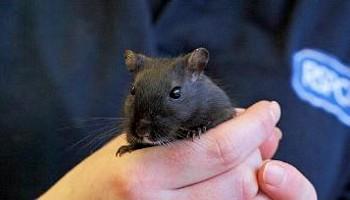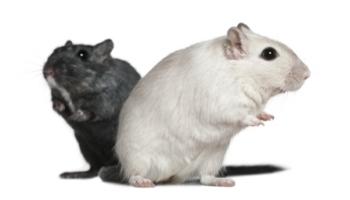Keeping gerbils together
Gerbils are intelligent and sociable animals, and their group sizes in the wild range from two to 15 animals of all ages and sexes. Groups are founded by a breeding pair and extended by their offspring and other relatives. For this reason, gerbils need to live with other gerbils and should never be kept on their own.
Which gerbils can be kept together?
Gerbils can be housed in same-sex pairs or groups, as long as the groups are formed early in life and are stable. Don’t keep males and females together unless you can provide for their young and are able to find good homes for the offspring!
- Group-housed gerbils should be young litter mates or members of harmonious group to help reduce the risk of aggression.
- Additional group members shouldn’t be added at a later date as established groups are unlikely to accept new animals, with the possible exception of juveniles less than five weeks old.
- If you do decide to introduce young gerbils to your group, house the animals separately but adjacent to each other for a week or so before putting them together. Transfer some used bedding from the new gerbil’s home to that of the group, and vice versa, and monitor them carefully when grouping them.
- Mutual grooming and nose-to-nose contact are signs that the animals are bonding.
- Check your gerbils regularly for signs of aggression between group members. If aggression occurs your gerbils may need to be separated.
- Don't house adult gerbils (of the same and opposite gender) next to one another if they don't know each other – even though they're in separate gerbilariums, they can find this frustrating and stressful.

Keeping gerbils with other pets
Gerbils are prey animals and can find the presence and scent of other animals in the home stressful. If you have any other pets, make sure they can't get to your gerbils.
Always keep a close eye on your gerbils if they're around another animal that may deliberately or accidentally harm or frighten them, even if you think they're good friends – particularly dogs and cats, which are natural predators.
Handling your gerbils
Gerbils don't like being picked up and handled, and may get scared and aggressive if they feel threatened. Although they can get used to gentle, careful handling they are naturally quick and agile – therefore you may find it difficult to handle them appropriately.
You can reduce the stress gerbils feel when being handled by having positive interactions with them and gently getting them used to you.
- Start by getting your gerbils used to your voice and presence without any physical contact. Once they tolerate your presence you can introduce gentle stroking,
- Next, interact with your gerbils every day, and handle them as often as you can once they are used to you – never force them to be handled if they don’t like it. Make their routine predictable so that they are not startled.
- Offer preferred food or a treat such as pumpkin seeds to help you bond with your pets.
- Make sure that you know how to handle your gerbils correctly, without causing them fear and distress. Always handle your gerbils carefully, in a confident but gentle manner:
- Gerbils should be allowed to investigate your hands in their own time.
- Gerbils should be picked up by gently cupping them with two hands, and fully supporting their body.
- Never pick up your gerbils by the tail because they can shed the outer layer of skin and hair of the tail if in danger, leaving the bone and muscle exposed.
- Don’t scruff or hold your gerbils at a height as they could fall and get injured. Handle them above a table or other surface or when sitting down.



